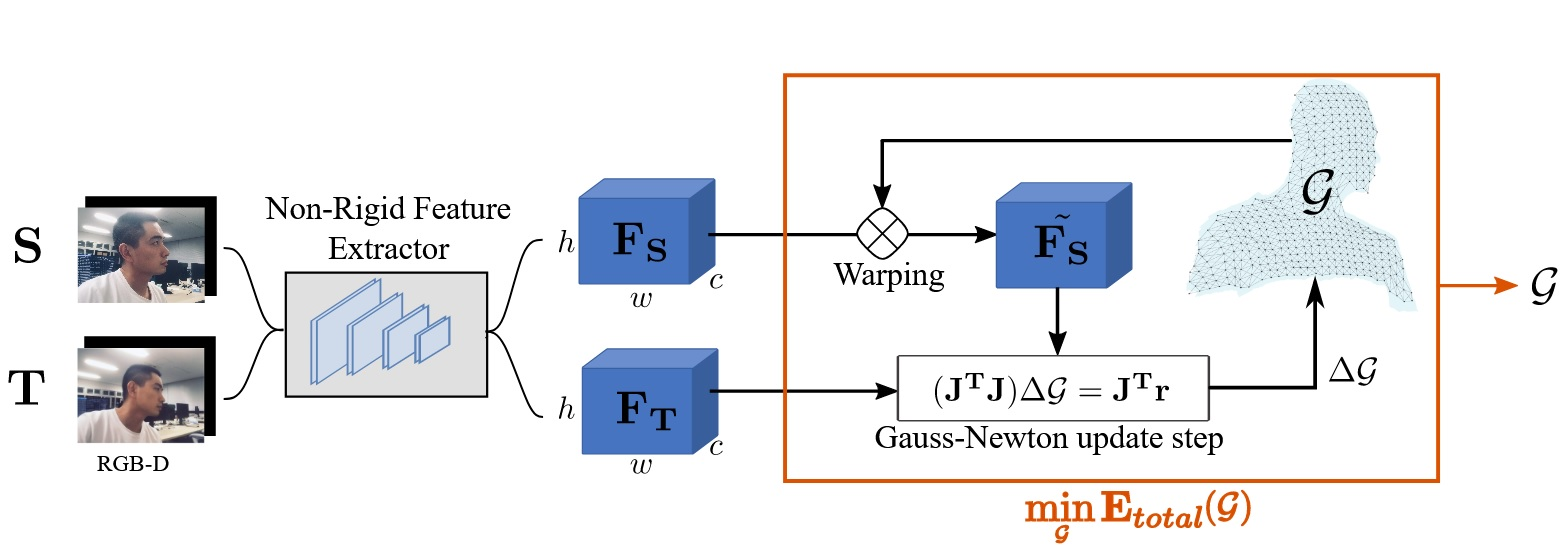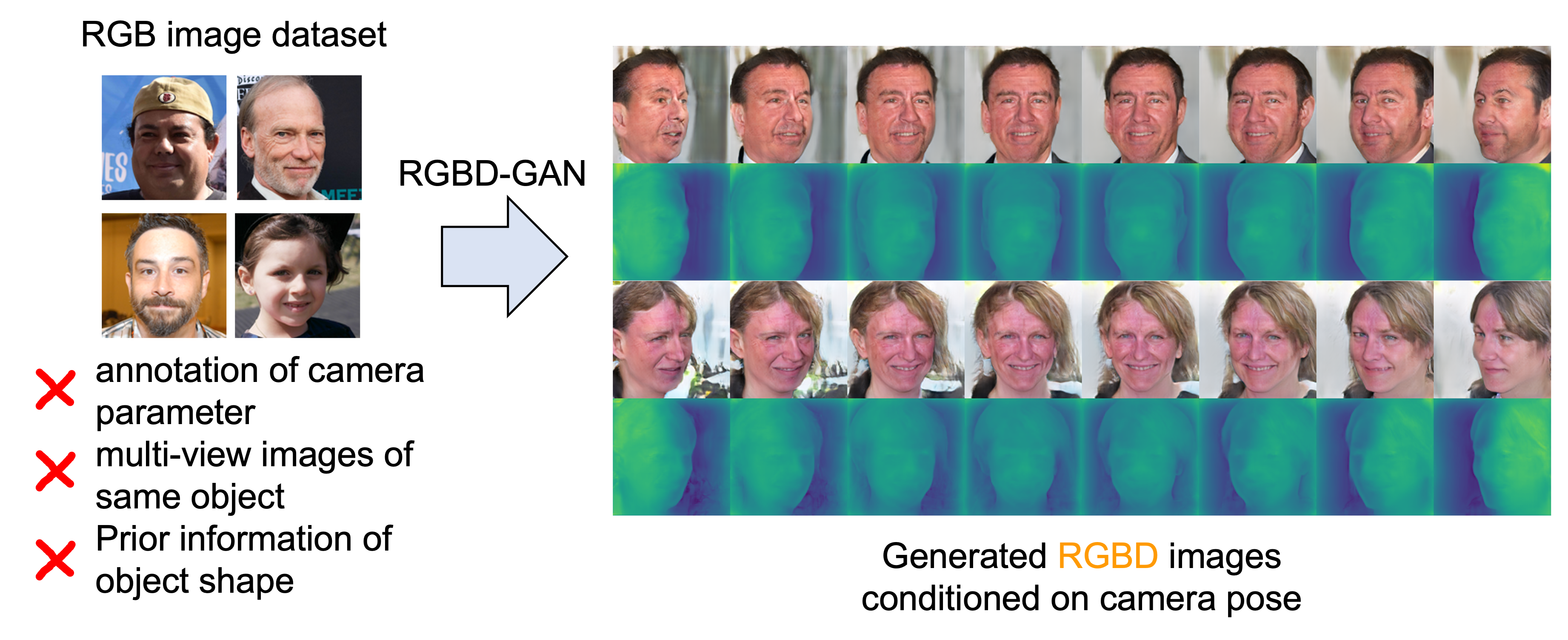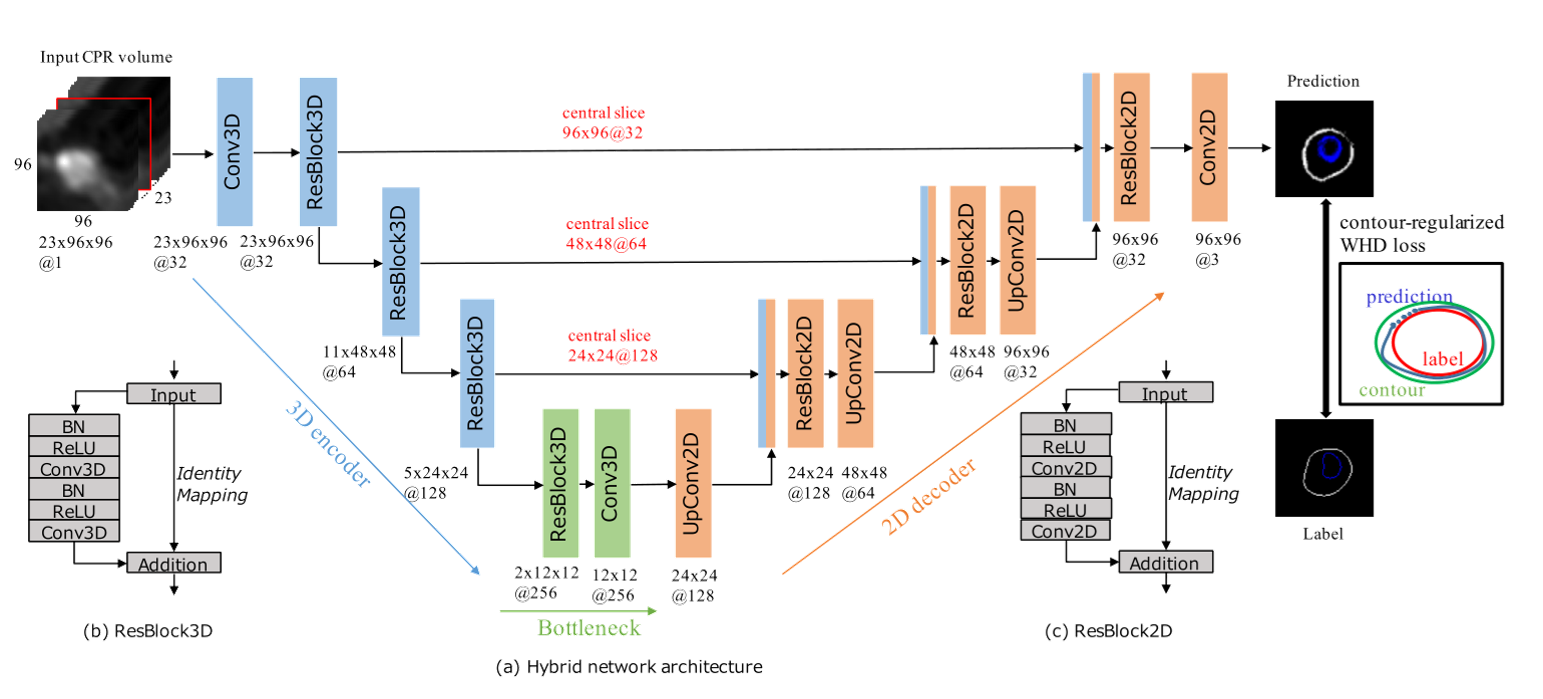Abstracts of papers published in 2020
CVPR 2020
Learning to Optimize Non-Rigid Tracking
Yang Li, Aljaz Bozic, Tianwei Zhang, Yanli Ji, Tatsuya Harada, Matthias Niessner
 One of the widespread solutions for non-rigid tracking has a nested-loop structure: with Gauss-Newton to minimize a tracking objective in the outer loop, and Preconditioned Conjugate Gradient (PCG) to solve a sparse linear system in the inner loop. In this paper, we employ
learnable optimizations to improve tracking robustness and speed up solver convergence. First, we upgrade the tracking objective by integrating an alignment data term on deep
features which are learned end-to-end through CNN. The new tracking objective can capture the global deformation which helps Gauss-Newton to jump over local minimum, leading to robust tracking on large non-rigid motions. Second, we bridge the gap between the preconditioning technique and learning method by introducing a ConditionNet which is trained to generate a preconditioner such that PCG can converge within a small number of steps. Experimental results indicate that the proposed learning method converges faster than the original PCG by a large margin.
One of the widespread solutions for non-rigid tracking has a nested-loop structure: with Gauss-Newton to minimize a tracking objective in the outer loop, and Preconditioned Conjugate Gradient (PCG) to solve a sparse linear system in the inner loop. In this paper, we employ
learnable optimizations to improve tracking robustness and speed up solver convergence. First, we upgrade the tracking objective by integrating an alignment data term on deep
features which are learned end-to-end through CNN. The new tracking objective can capture the global deformation which helps Gauss-Newton to jump over local minimum, leading to robust tracking on large non-rigid motions. Second, we bridge the gap between the preconditioning technique and learning method by introducing a ConditionNet which is trained to generate a preconditioner such that PCG can converge within a small number of steps. Experimental results indicate that the proposed learning method converges faster than the original PCG by a large margin.
(PDF)
ICLR 2020
RGBD-GAN: Unsupervised 3D Representation Learning From Natural Image Datasets via RGBD Image Synthesis
Atsuhiro Noguchi, Tatsuya Harada
 Understanding three-dimensional (3D) geometries from two-dimensional (2D) images without any labeled information is promising for understanding the real world without incurring annotation cost. We herein propose a novel generative model, RGBD-GAN, which achieves unsupervised 3D representation learning from 2D images. The proposed method enables camera parameter-conditional image generation and depth image generation without any 3D annotations, such as camera poses or depth. We use an explicit 3D consistency loss for two RGBD images generated from different camera parameters, in addition to the ordinal GAN objective. The loss is simple yet effective for any type of image generator such as DCGAN and StyleGAN to be conditioned on camera parameters. Through experiments, we demonstrated that the proposed method could learn 3D representations from 2D images with various generator architectures.
Understanding three-dimensional (3D) geometries from two-dimensional (2D) images without any labeled information is promising for understanding the real world without incurring annotation cost. We herein propose a novel generative model, RGBD-GAN, which achieves unsupervised 3D representation learning from 2D images. The proposed method enables camera parameter-conditional image generation and depth image generation without any 3D annotations, such as camera poses or depth. We use an explicit 3D consistency loss for two RGBD images generated from different camera parameters, in addition to the ordinal GAN objective. The loss is simple yet effective for any type of image generator such as DCGAN and StyleGAN to be conditioned on camera parameters. Through experiments, we demonstrated that the proposed method could learn 3D representations from 2D images with various generator architectures.
(PDF)
ISBI 2020
Coronary wall segmentation in CCTA scans via a hybrid net with contours regularization
Kaikai Huang, Antonio Tejero-de-Pablos, Hiroaki Yamane, Yusuke Kurose, Junichi Iho, Youji Tokunaga, Makoto Horie, Keisuke Nishizawa, Yusaku Hayashi, Yasushi Koyama, Tatsuya Harada
 Providing closed and well-connected boundaries of coronary artery is essential to assist cardiologists in the diagnosis of coronary artery disease (CAD).
Recently, several deep learning-based methods have been proposed for boundary detection and segmentation in a medical image.
However, when applied to coronary wall detection, they tend to produce disconnected and inaccurate boundaries.
In this paper, we propose a novel boundary detection method for coronary arteries that focuses on the continuity and connectivity of the boundaries.
In order to model the spatial continuity of consecutive images, our hybrid architecture takes a volume (i.e., a segment of the coronary artery) as input and detects the boundary of the target slice (i.e., the central slice of the segment).
Then, to ensure closed boundaries, we propose a contour-constrained weighted Hausdorff distance loss. We evaluate our method on a dataset of 34 patients of coronary CT angiography scans with curved planar reconstruction (CCTA-CPR) of the arteries (i.e., cross-sections).
Experiment results show that our method can produce smooth closed boundaries outperforming the state-of-the-art accuracy.
(Paper)
Providing closed and well-connected boundaries of coronary artery is essential to assist cardiologists in the diagnosis of coronary artery disease (CAD).
Recently, several deep learning-based methods have been proposed for boundary detection and segmentation in a medical image.
However, when applied to coronary wall detection, they tend to produce disconnected and inaccurate boundaries.
In this paper, we propose a novel boundary detection method for coronary arteries that focuses on the continuity and connectivity of the boundaries.
In order to model the spatial continuity of consecutive images, our hybrid architecture takes a volume (i.e., a segment of the coronary artery) as input and detects the boundary of the target slice (i.e., the central slice of the segment).
Then, to ensure closed boundaries, we propose a contour-constrained weighted Hausdorff distance loss. We evaluate our method on a dataset of 34 patients of coronary CT angiography scans with curved planar reconstruction (CCTA-CPR) of the arteries (i.e., cross-sections).
Experiment results show that our method can produce smooth closed boundaries outperforming the state-of-the-art accuracy.
(Paper)